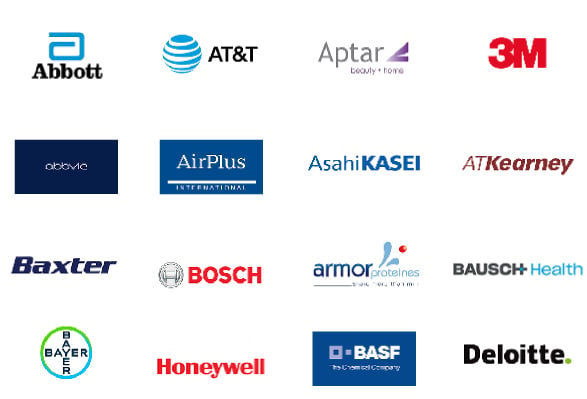The hydroponics market is estimated to be valued at USD 53.21 Bn in 2025 and is expected to reach USD 119.93 Bn by 2032, growing at a compound annual growth rate (CAGR) of 12.3% from 2025 to 2032.
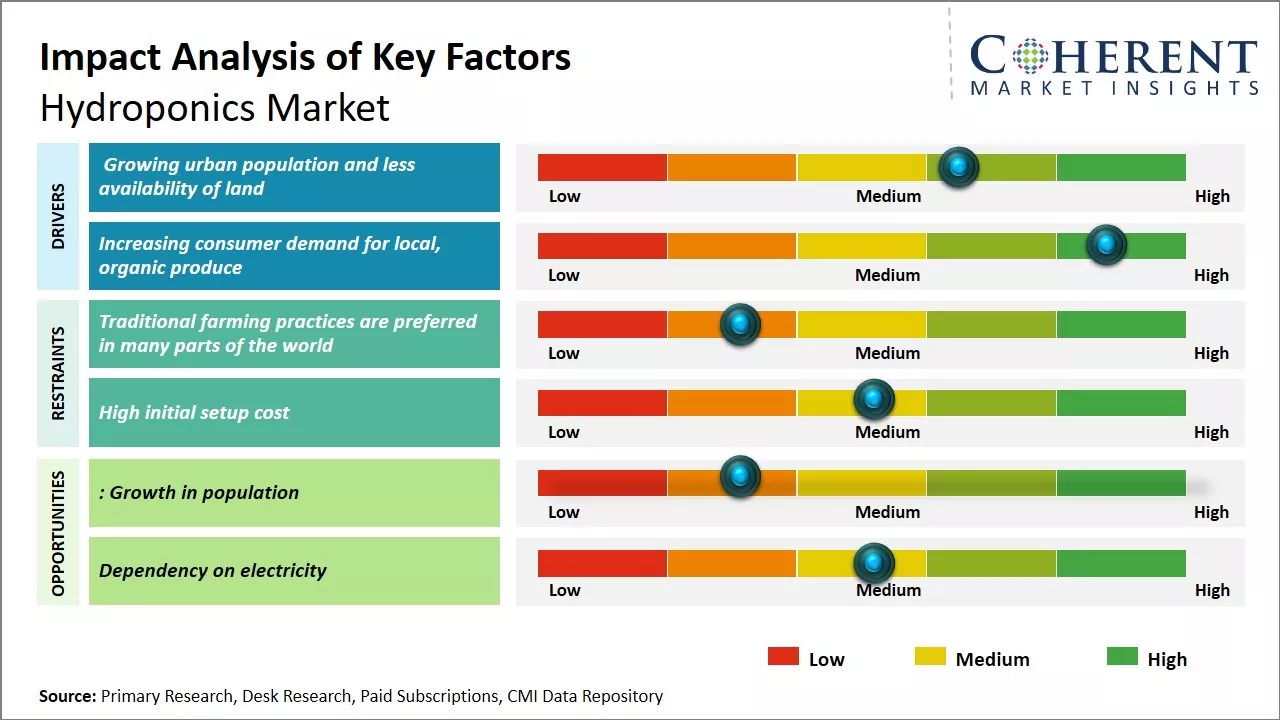
Discover market dynamics shaping the industry: Request sample copy
The growing popularity of organic foods and the need for alternative farming practices are expected to drive the hydroponics market during the forecast period. Consumers are increasingly looking for organically grown leafy greens and vegetables due to rising health concerns regarding the chemicals used in traditional farming. Moreover, hydroponic farming provides higher yields while using less water and fertilizers, making it a more sustainable option. With diminished agricultural land and water resources, hydroponics is emerging as a solution to fulfill the growing demand for fresh produce. Further, technological advancements in hydroponics equipment and expanded applications in urban farming is likely to boost the adoption of hydroponic solutions in the coming years.
Growing urban population and less availability of land
With the steady growth in urban population across the globe, major cities are becoming more densely populated than ever. According to United Nations projections, around 68% of the world is expected to live in urban areas by 2050. As cities continue to swell with new residents, the availability of fresh agricultural land near urban centers is shrinking rapidly. Traditional open field farming is no longer a viable option to meet the rising food demand of city dwellers. At the same time, factors like increased land and rental costs also make it tough for farmers to access large tracts of farmland close to cities. Hydroponic farming provides a sustainable solution to overcome these land constraints. It enables crops to be grown indoors in vertically stacked layers or multi-level spaces, utilizing only a fraction of the land needed for conventional agriculture. Hydroponic systems can be easily set up on rooftops, in warehouses or inside shipping containers close to major points of consumption. This significantly reduces transportation and logistics costs, ensures faster delivery of fresh produce to local markets and lowers food wastage. With well-designed hydroponic farms, almost year-round harvesting is possible as the environment can be precisely controlled. The ability to grow crops within urban limits using minimal land and water resources makes hydroponics highly suitable for densely populated urban areas facing land shortage issues.
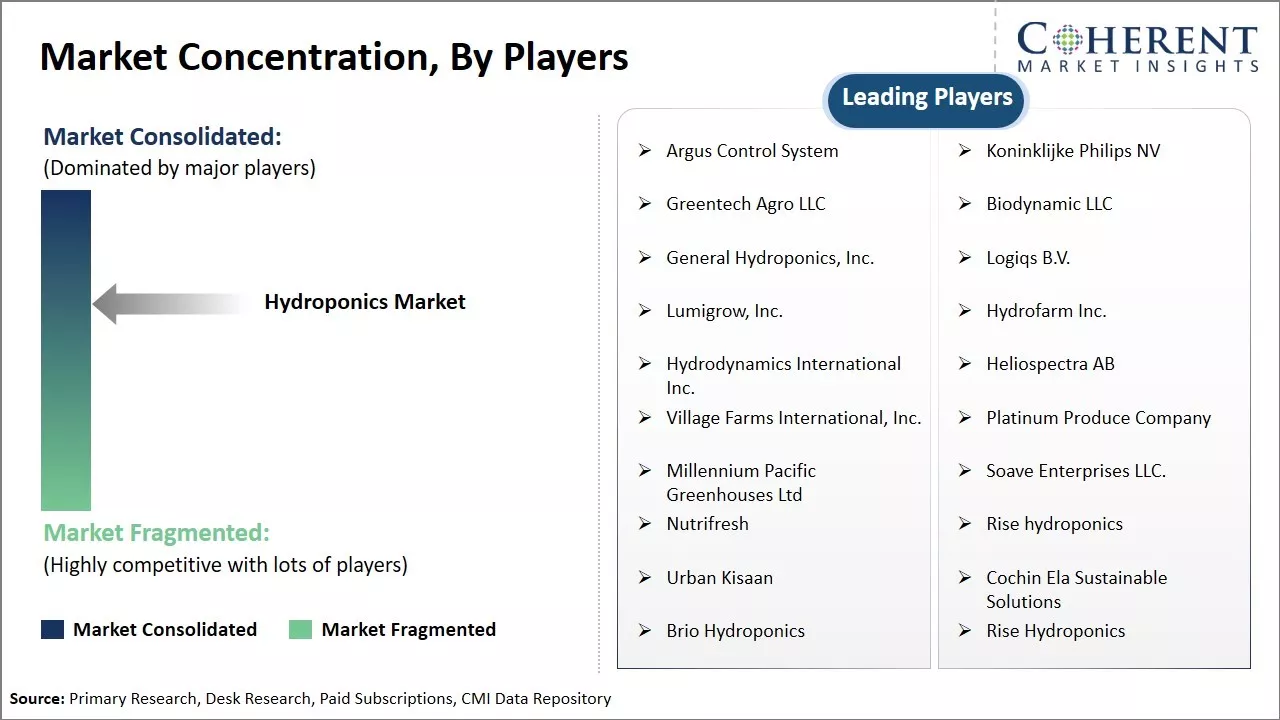
Get actionable strategies to beat competition: Request sample copy
Increasing consumer demand for local, organic produceRising health consciousness among consumers has boosted the popularity of organic and locally grown fruits and vegetables in recent years. Shoppers are increasingly preferring fresh produce that has been grown naturally without the use of pesticides, herbicides, or chemical fertilizers. They also like to purchase from farmers living within their state or region to minimize the carbon footprint and get produce that has higher nutritional value from being harvested close to ripeness. This changing trend has created strong demand for organically certified and locally sourced agricultural products in both retail and food service sectors. Hydroponic farming is very well positioned to cater to this growing demand. The controlled environment hydroponics setup allows crops to be grown using only natural inputs while excluding the need for synthetic fertilizers and agrochemicals. This satisfies consumer preferences for organic produce. At the same time, hydroponic farms can be situated on a much smaller piece of land within or very near cities, allowing easy localized production and distribution of fruits and vegetables.
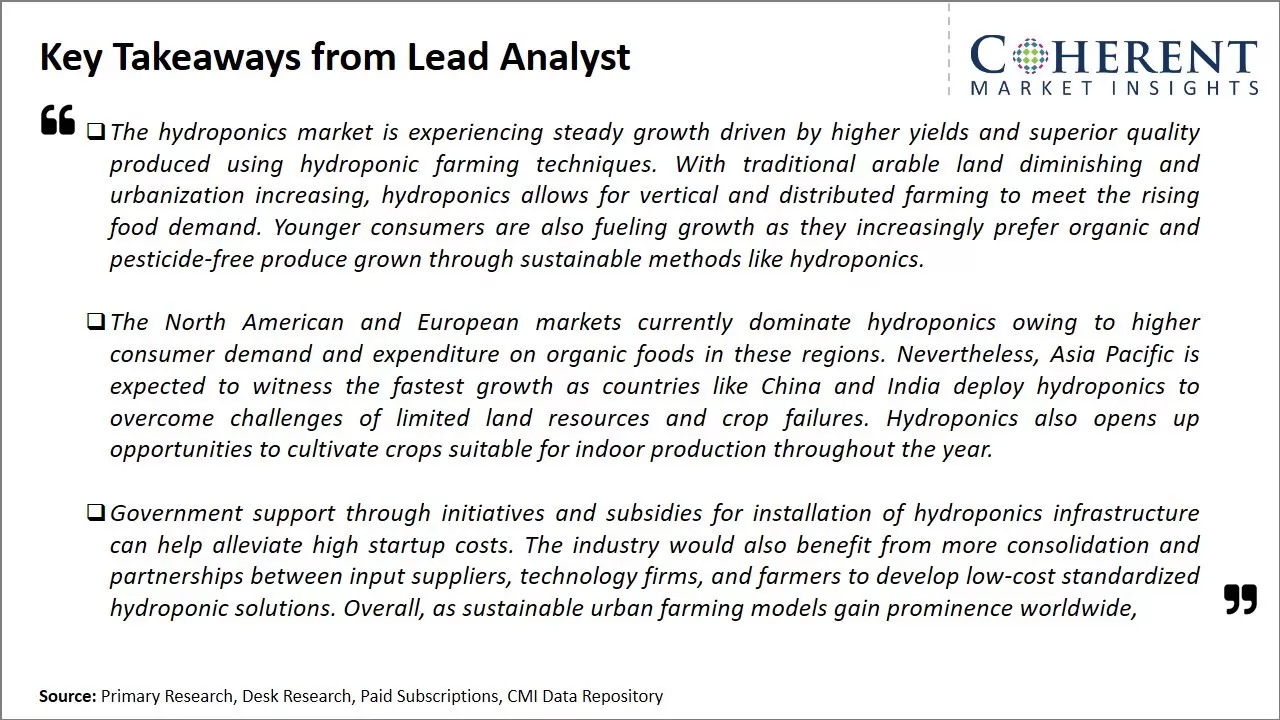
To learn more about this report, Request sample copy
Market Challenges: Traditional farming practices are preferred in many parts of the worldThe hydroponics market faces several challenges in further growth. Traditional farming practices are still preferred in many parts of the world. The high initial investment and expertise needed for hydroponic setups make it inaccessible for smaller farmers. Hydroponic food production also relies heavily on technology and artificial growing conditions. Pests and diseases can spread rapidly without proper controls. Climate change is increasing unpredictability that challenges production planning. Stricter environmental regulations around water usage and chemicals may raise operating costs.
Market Opportunities: Growth in population
The hydroponics market also presents many opportunities. With the world's population continuing to grow, hydroponics allows year-round production and higher yields on less land. It is well-suited for urban and indoor vertical farming. Consumer demand for pesticide-free local produce is on the rise. As technologies advance, hydroponic solutions are becoming more affordable and user-friendly.
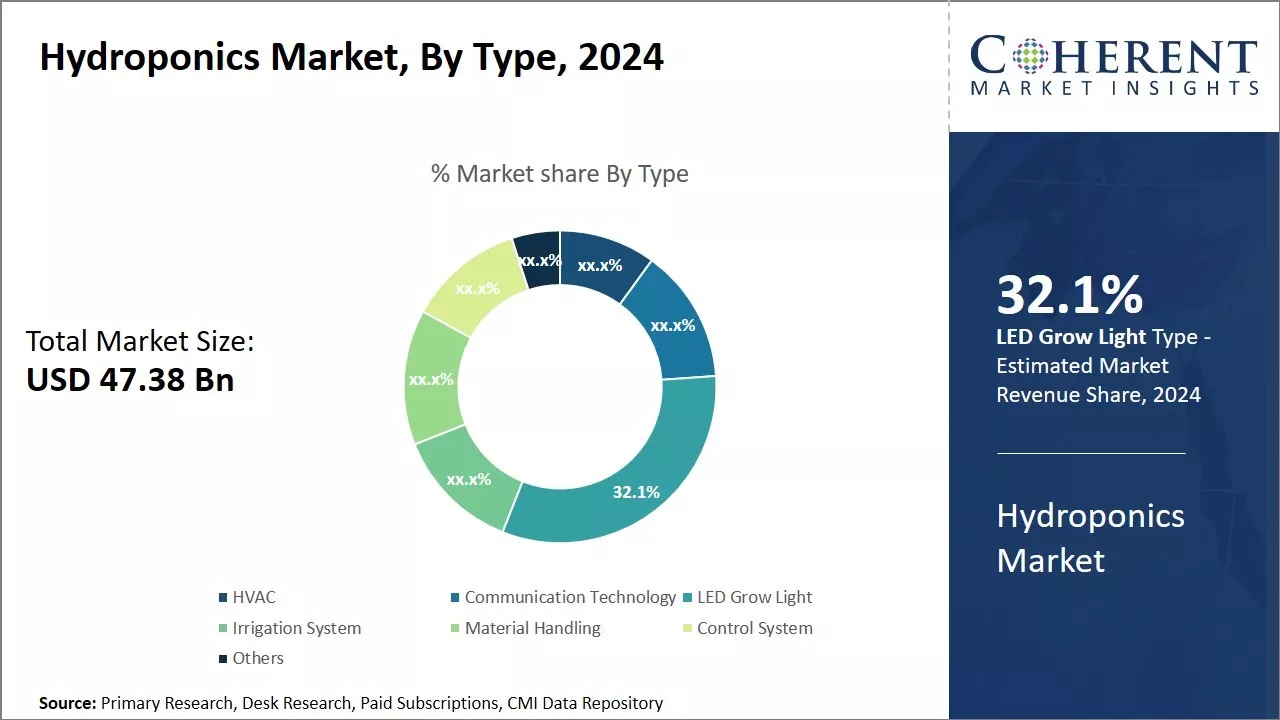
Discover high revenue pocket segments and roadmap to it: Request sample copy
Insights, By Type: Maximized Yields from Water ManagementIn terms of type, deep water culture contributes 36.1% share of the market as it maximizes crop yields through efficient water and nutrient delivery. In deep water culture systems, plant roots are suspended in a floating raft or mesh cup meant to hold the plant and restrict its roots from entering the nutrient-rich water below. An air stone constantly aerates the nutrient solution, dissolving oxygen and distributing it throughout the solution. This oxygenates the root zone, creating an ideal environment for aggressive root growth. Plants can access precisely formulated nutrient-dense water whenever needed without fluctuations. Farmers can easily monitor solution pH, temperature, and nutrient concentration with control mechanisms. Deep water culture ensures explosive plant growth from consistent hydration and nutrient availability. It is suitable for most leafy greens and herbs with prolific roots. Furthermore, yields are impressively high due to high plant densities facilitated through maximized space usage. These advantages have cemented deep water culture's prominence in the hydroponics market.
Insights, By Equipment: Advanced Technology Fuels the LED Grow Light Dominance
In terms of equipment, LED grow light contributes 32.6% share of the market owing to its advanced lighting technology. LED lights provide several advantages over traditional lighting sources like high-pressure sodium (HPS) and metal halide lamps. LEDs consume less energy as they emit around 80% of light directly without heat loss. This significantly reduces cooling costs and makes operations more energy efficient. Their light spectrum can also be customized to specific wavelengths optimal for plant growth. Farmers can tailor light quality for different plant varieties and growth stages. LEDs have a longer lifespan of over 50,000 hours, minimizing replacement and maintenance costs. Their compact modular design enables flexible lighting arrangements suited for different facility sizes and layouts. LED grow lights create uniform light distribution minimizing shadow areas. This allows high crop yields from high plant density under lit space. Overall, LED technology enables year-round indoor farming with optimal lighting customized for each crop type. Its numerous economic and operational benefits have made it the clear market leader in the equipment segment.
Insights, By Crop Type: Popularity Drives Fruit Production
In terms of crop type, fruits contributes 40.4% share of the market owing to their growing popularity. Consumer preference for fresh and local produce has heightened the demand for hydroponically grown fruits. Their year-round availability independent of seasonality or climate has increased the fruit consumption. Hydroponically cultivated berries like strawberries realize 2-3 times greater yields than soil-based farming through optimal growing conditions. Their larger sizes and richer flavors have encouraged fruit integration into more American diets. Elevated demand has created a market pull for hydroponic farmers to diversify into high-value fruits. Production shifts address rising health consciousness around nutrition from produce. Additionally, controlled environments facilitate integrated pest management for fruits requiring intensive spraying outdoors. Regulated climate and nutrient input produces pesticide-free, blemish-free produce ideal for niche markets. Growth of supermarkets, online retailers, and global trade have opened fruits to wider consumer access. These consumption and market trends continue propelling the fruit segment's progression in the hydroponics industry.
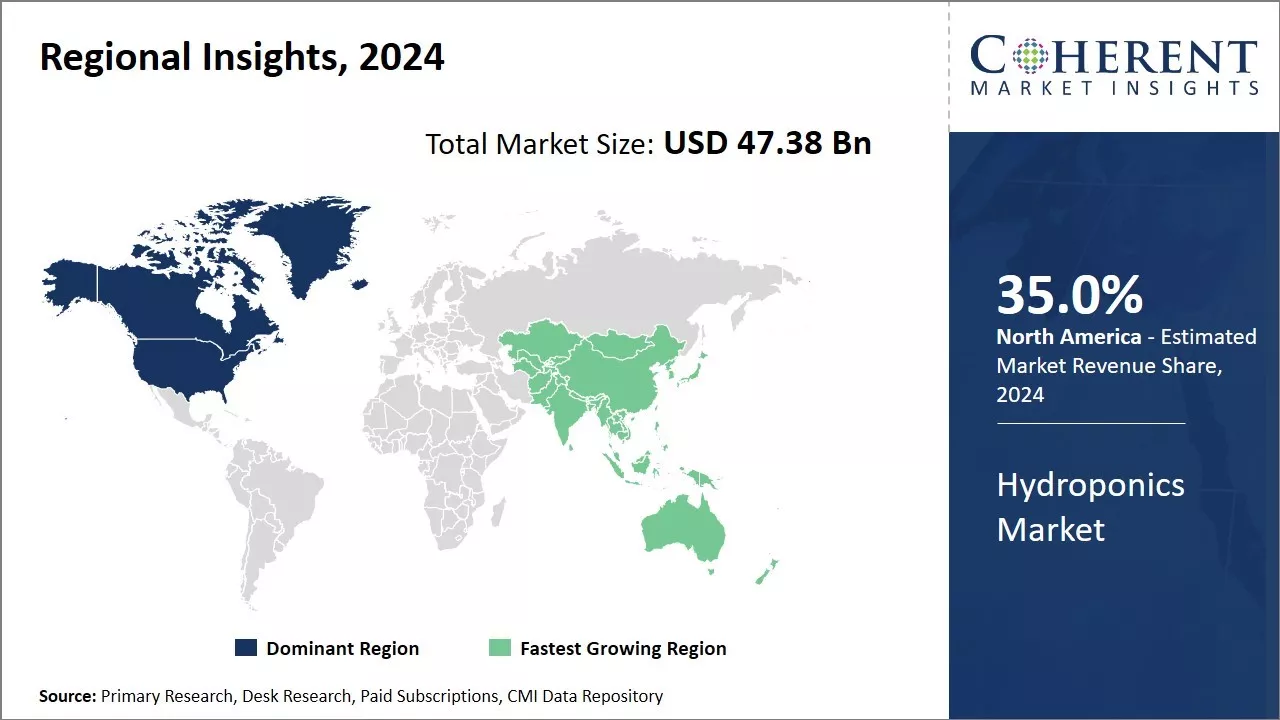
To learn more about this report, Request sample copy
North America has established itself as the dominant region in the global hydroponics market. With the extensive adoption of hydroponic farming practices across different application sectors such as indoor and outdoor farming, the region accounts for over 41.6% of the worldwide hydroponics market share. The U.S. alone captures close to 30.5% of the global market owing to the large-scale commercial production of high-value crops through hydroponics. Farmers in the region have widely adopted sophisticated hydroponic greenhouse systems to cultivate crops throughout the year without being dependent on seasonal variations or climatic conditions.
Apart from the existing mature markets, Asia Pacific has emerged as a high-growth hotspot in the global industry. The ASEAN region has seen massive increase in indoor hydroponic farming to fulfill the rising demand for fresh produce from densely populated cities. Countries like Thailand, Malaysia, and Indonesia are attracting major investments from leading equipment manufacturers to tap into the fast-evolving urban agriculture trend. The adoption of hydroponics is mainly driven by the need to optimize limited land resources and explore new revenue streams from high-value organic crops. Thai hydroponic farmers have particularly focused on herbs, leafy vegetables, and organic strawberries for both domestic consumption and exports to Western markets.
Hydroponics Market Report Coverage
| Report Coverage | Details | ||
|---|---|---|---|
| Base Year: | 2024 | Market Size in 2025: | USD 53.21 Bn |
| Historical Data for: | 2020 To 2024 | Forecast Period: | 2025 To 2032 |
| Forecast Period 2025 to 2032 CAGR: | 12.3% | 2032 Value Projection: | USD 119.93 Bn |
| Geographies covered: |
|
||
| Segments covered: |
|
||
| Companies covered: |
Argus Control System, Koninklijke Philips NV , Greentech Agro LLC , Biodynamic LLC, General Hydroponics, Inc., Logiqs B.V., Lumigrow, Inc., Hydrofarm Inc., Hydrodynamics International Inc., Heliospectra AB, Village Farms International, Inc., Platinum Produce Company , Millennium Pacific Greenhouses Ltd, Soave Enterprises LLC., Nutrifresh, Rise hydroponics, Urban Kisaan, Cochin Ela Sustainable Solutions, Brio Hydroponics, and Rise Hydroponics |
||
| Growth Drivers: |
|
||
| Restraints & Challenges: |
|
||
Uncover macros and micros vetted on 75+ parameters: Get instant access to report
Share
Share
About Author
Yash Doshi is a Senior Management Consultant. He has 12+ years of experience in conducting research and handling consulting projects across verticals in APAC, EMEA, and the Americas.
He brings strong acumen in helping chemical companies navigate complex challenges and identify growth opportunities. He has deep expertise across the chemicals value chain, including commodity, specialty and fine chemicals, plastics and polymers, and petrochemicals. Yash is a sought-after speaker at industry conferences and contributes to various publications on topics related commodity, specialty and fine chemicals, plastics and polymers, and petrochemicals.
Missing comfort of reading report in your local language? Find your preferred language :
Transform your Strategy with Exclusive Trending Reports :
Frequently Asked Questions
Joining thousands of companies around the world committed to making the Excellent Business Solutions.
View All Our Clients